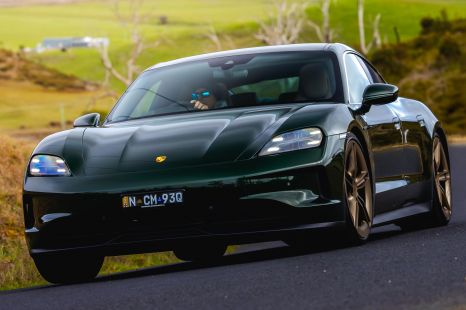

James Wong
1 Year Ago
The Volvo wagon range has been trimmed back to one model and one variant. Thankfully, the V60 Cross Country is a very good thing.
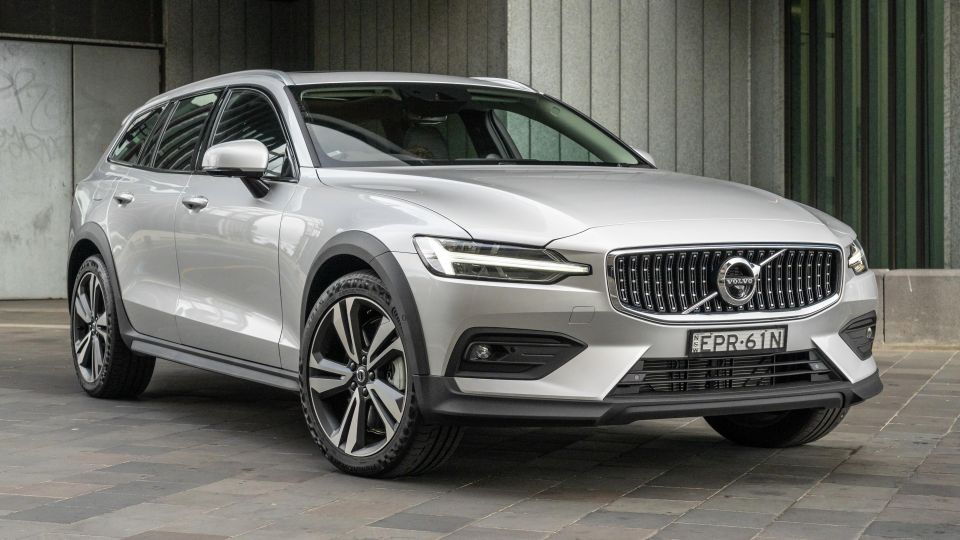
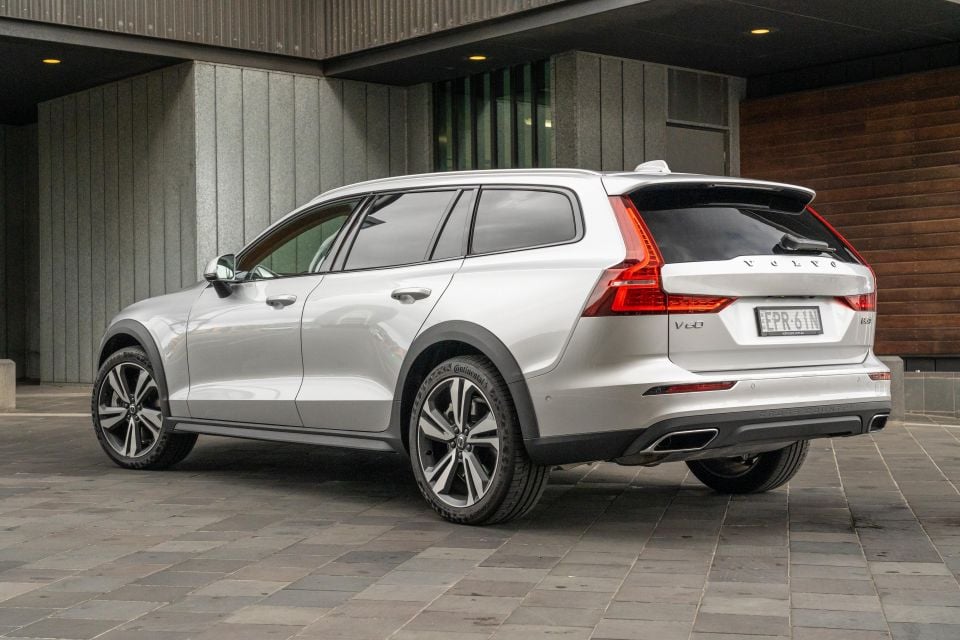

Quickly see how this car stacks up against its competition. Select any benchmark to see more details.
Take advantage of Australia's BIGGEST new car website to find a great deal on a Volvo V60.
You know things are dire for the old-fashioned wagon when even Volvo has to start trimming its range.
Gone is the large V90 Cross Country wagon from Australia, and the regular V60 wagon has been culled in favour of the 2022 Volvo V60 Cross Country on test here.
What’s more, it’s only available with one mild-hybrid petrol engine option. Want a diesel? Sorry, you’re out of luck.

It’s enough to make you wonder why you’d bother with a car like the V60 Cross Country instead of an XC40 or XC60.
Write off the V60 Cross Country at your peril, though.
Like the great Volvo wagons of old, it punches well above its weight. The year is still young, but it’s a strong contender for underrated gem of 2022 already.
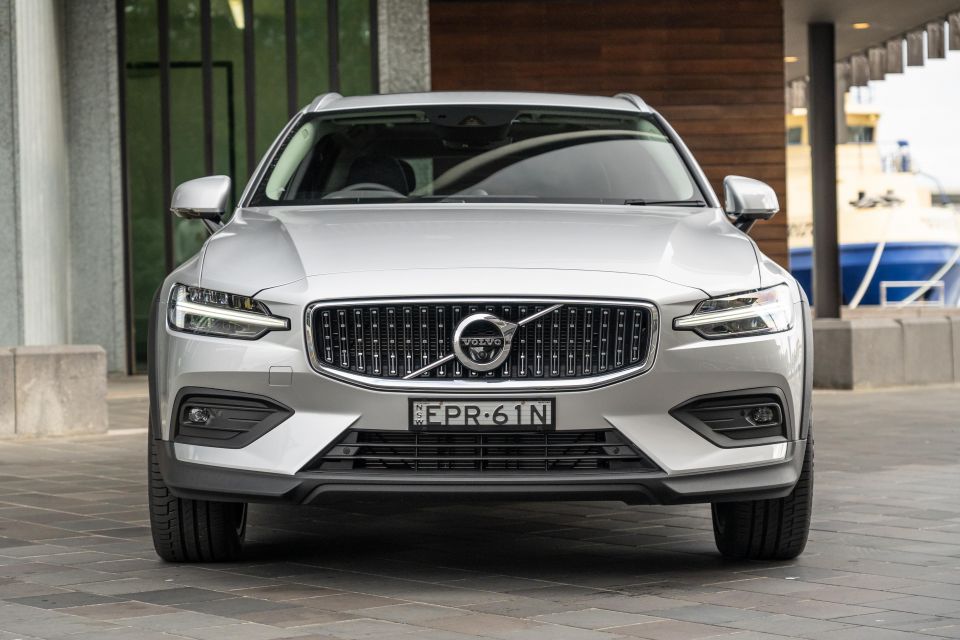
The only 2022 Volvo V60 Cross Country model, the B5, is priced at $64,990 before on-road costs.
Our tester was fitted with the Lifestyle Package with Bowers & Wilkins audio ($5610 incl. panoramic roof, tinted rear windows, Bowers & Wilkins sound system), and ventilated nappa leather seats ($2098).
Although its list price has grown to $72,698 before on-roads with those options fitted, the V60 CC still represents good value.
Its most direct rival, the Audi A4 allroad, starts at $77,700 before on-road costs, while the low-riding BMW 3 Series Touring kicks off at $83,900 before on-roads.
Mercedes-Benz doesn’t offer the C-Class wagon in Australia anymore, let alone the raised All-Terrain.
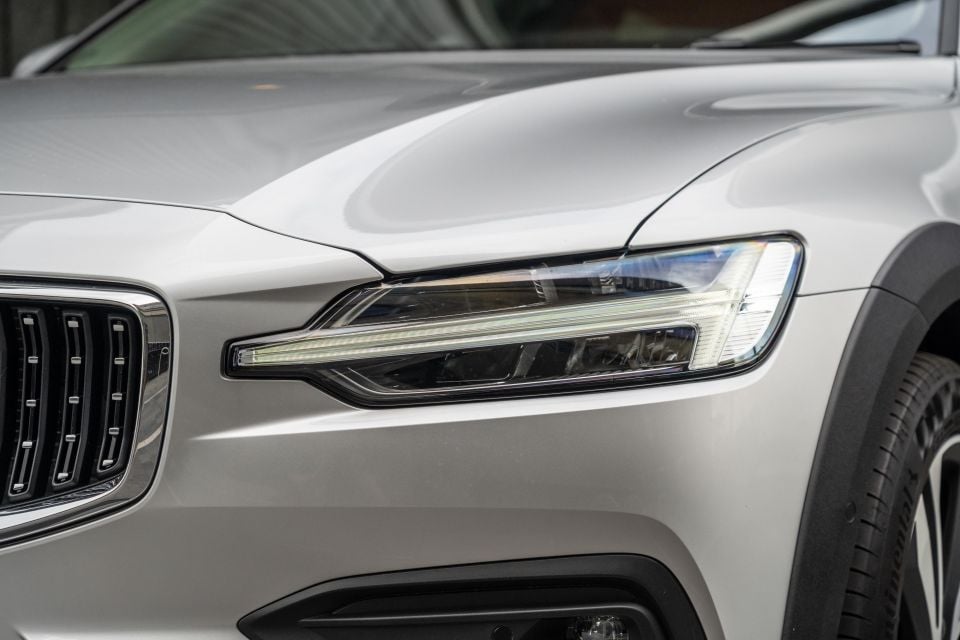
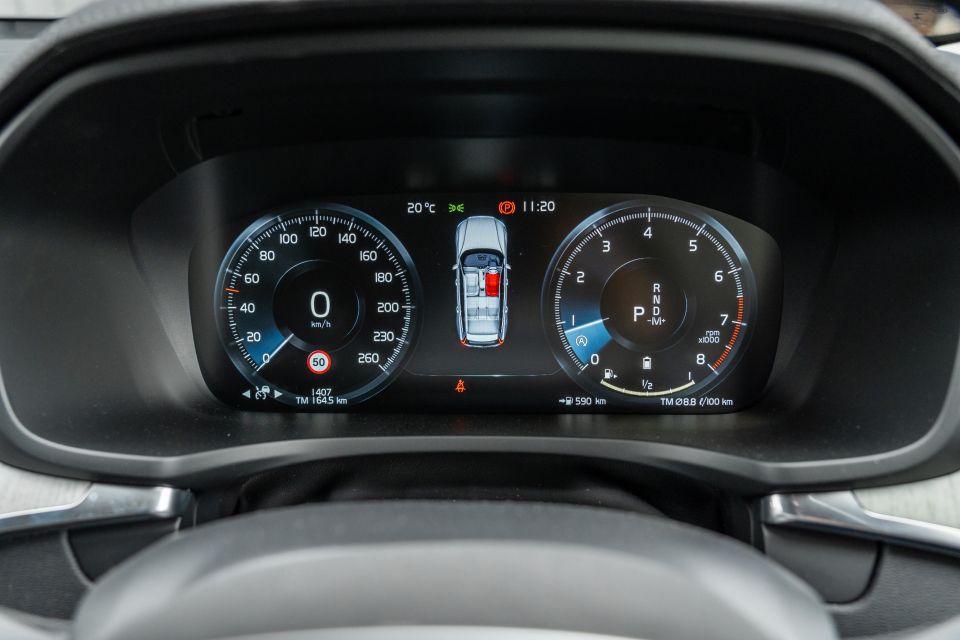
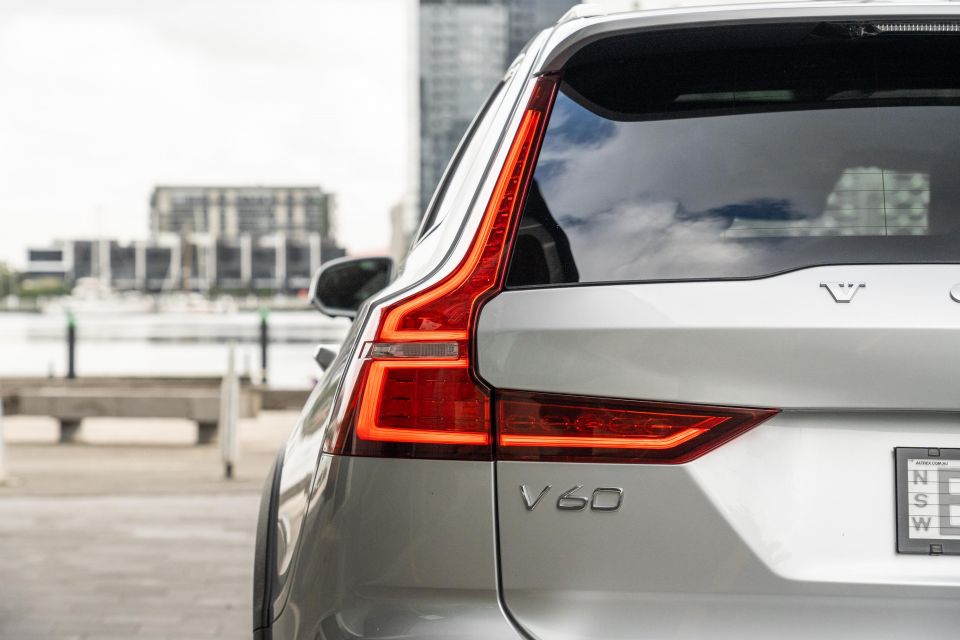
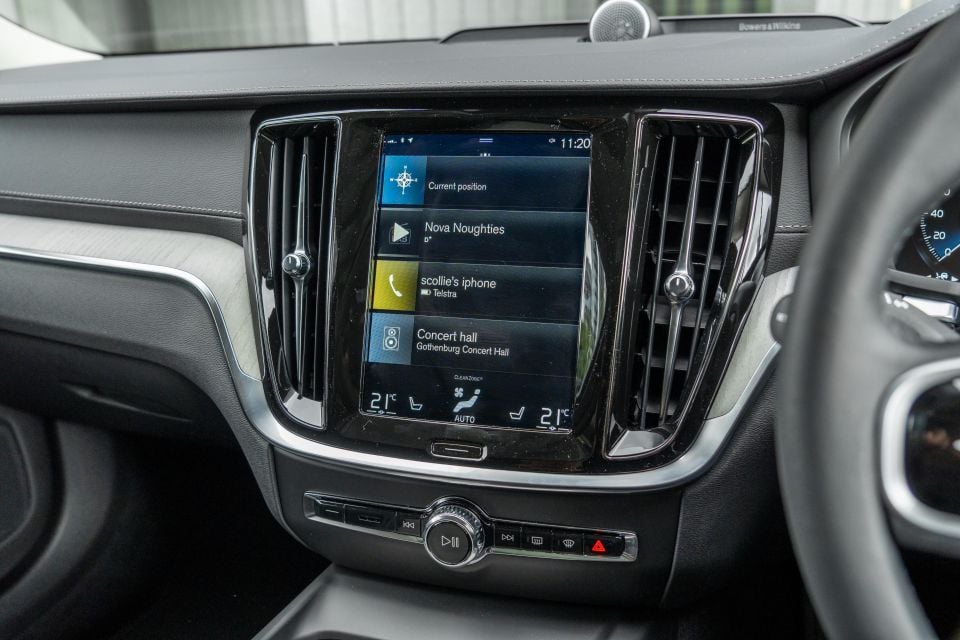
The Lifestyle Package ($3310) brings a panoramic sunroof, tinted rear windows, and a Harman Kardon sound system. Opting for a Bowers and Wilkins stereo as part of the same package ups the price to $5620.

The V60 Cross Country hasn’t been crash tested by ANCAP, but the V60 T5 has a five-star rating based on testing carried out in 2018.
It scored 96 per cent for adult occupant protection, 88 per cent for child occupant protection, 74 per cent for vulnerable road user protection, and 77 per cent for safety assist.
Standard safety equipment includes:

The V60 Cross Country doesn’t deviate far from the formula laid down by the rest of the Volvo range, which is mostly a good thing.
The materials are all high quality, from the wood trim to the metal speaker grates, and the optional Nappa leather seats smell and feel expensive.
You won’t mistake this for anything but a Volvo – it’s not a wannabe Mercedes-Benz or BMW, that’s for sure – and the chic design is backed by plenty of neat touches showing plenty of thought has gone into making this easy to live with.
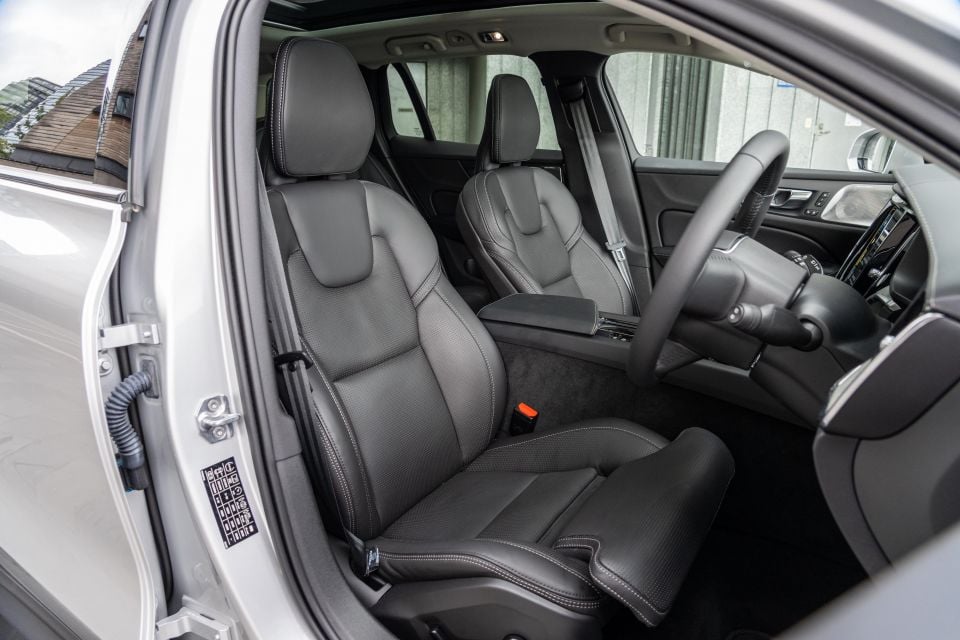
The seats might look slim and sculptural, but they’re some of the best in the business. They’re incredibly supportive, and offer enough adjustment to support a huge range of body shapes. Along with the base and backrest, the bolsters, under-thigh support, and lumbar on the driver’s seat are all electrically adjustable.
They’re also heated and ventilated. We did more than 1000km in the V60, most of it in a couple of long highway stints, and hopped out feeling fresh and loose every time.
The driver is faced with two big screens. The first is the vertically-oriented touchscreen responsible for infotainment, the second is the simple (but effective) digital instrument binnacle.

It’ll be replaced by an Android-based system soon, but the Sensus infotainment technology in the V60 can still hold its own even eight years after debuting in the XC90.
It’s built around tiles which expand and shrink based on what you’re using at a particular time, and manages to get away with lacking physical climate controls by anchoring shortcuts for your temperature, seat heaters, and climate control at the base of the display.
Apple CarPlay worked seamlessly, as did Bluetooth connectivity, and the range of swipes, pokes, and prods required to navigate are met with snappy responses and relatively smooth graphics.
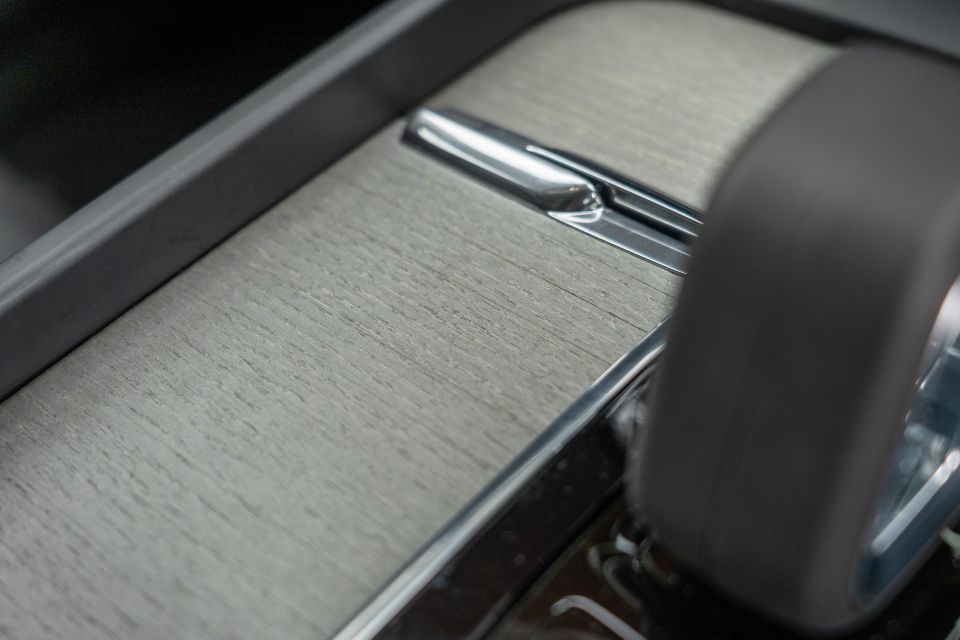
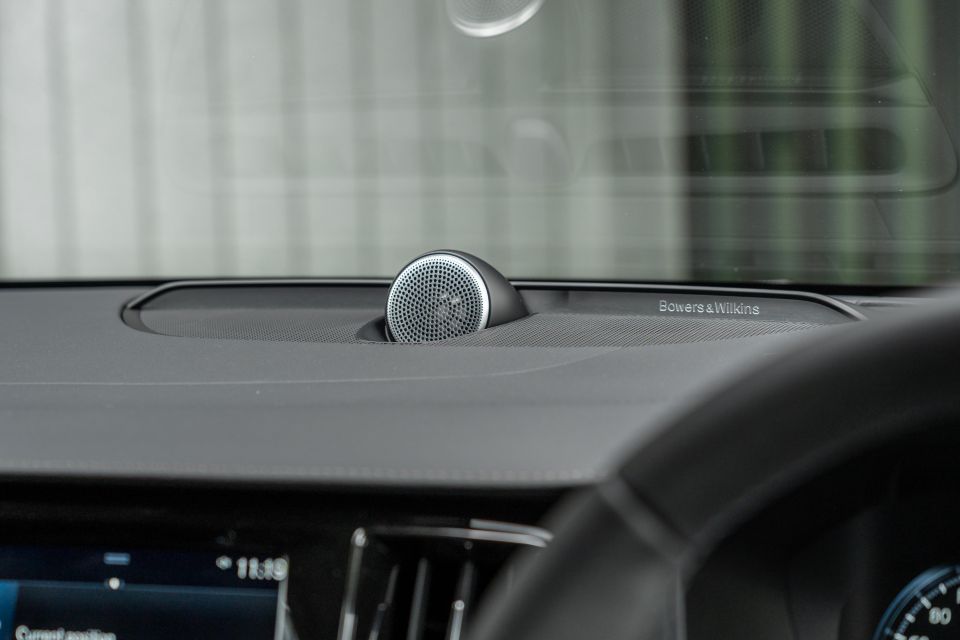
The optional Bowers & Wilkins stereo is excellent, too. It’s crystal clear, packs plenty of punch, and can be flicked into a few different modes based on how you like to experience your music. Gothenburg Concert Hall is a highlight.
There are a few missteps up front, however. It’s covered in lovely open-pore wooden trim but the wireless phone charger feels like an afterthought, and doesn’t do a great job keeping your phone in place on the move.
Save for the storage bin in the central armrest, there’s not a heap of oddment storage either.
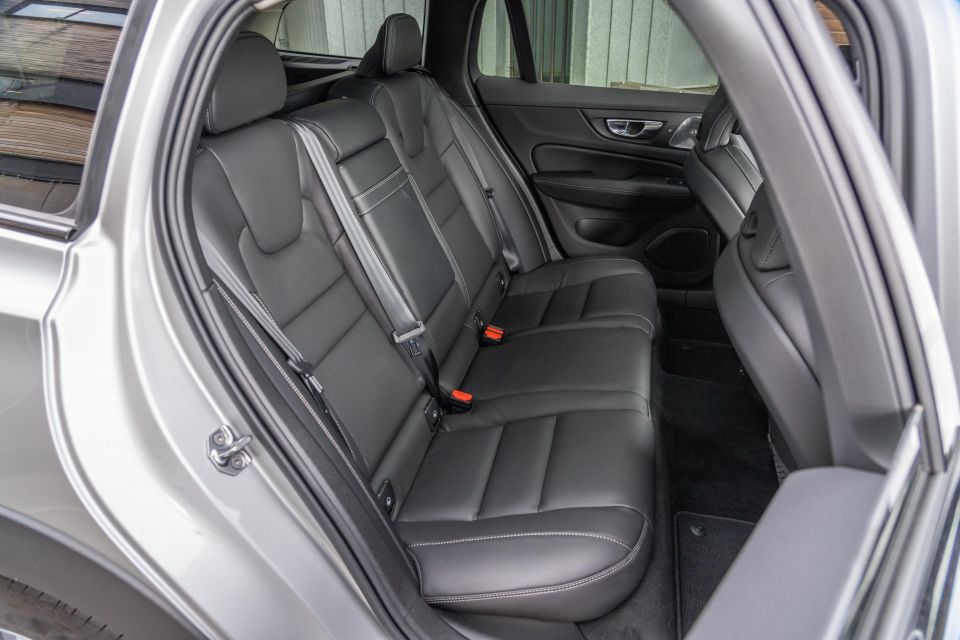
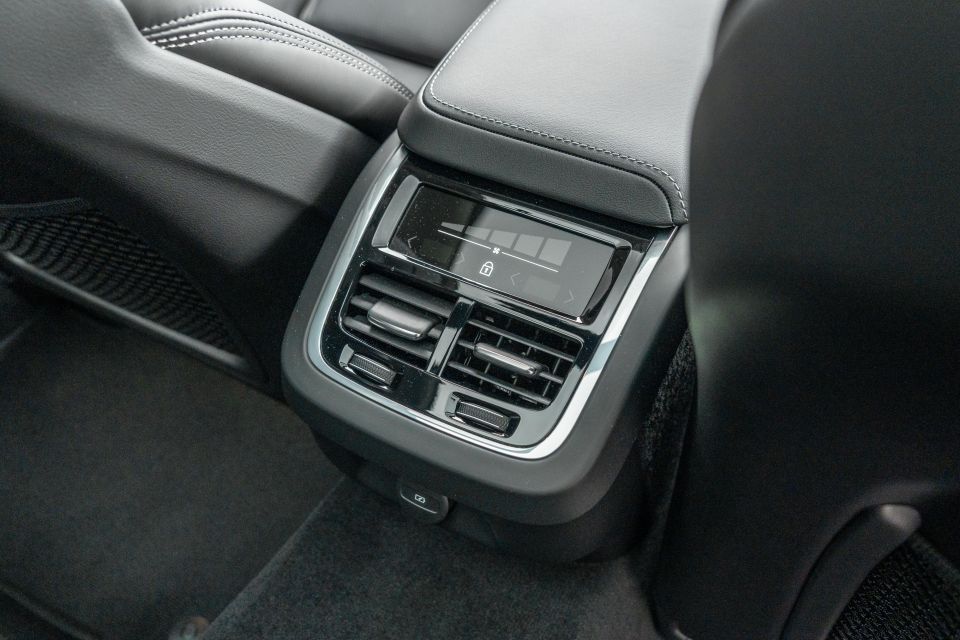
Rear seat space is good. The rear door openings are quite small, but once you’re in there’s much more headroom than you’d expect of a car with a panoramic sunroof, and decent legroom for normal-sized people behind normal-sized people.
Kids will appreciate the fact there’s climate controls back there, and the shin-level vents on the back of the transmission tunnel are backed by face-level vents on the B-pillars. That’s handy on a hot Australian summer’s day.
You also get map pockets in the seatbacks, a fold-down central armrest with cupholders and storage, and decent door bins. Unfortunately, the centre seat is only really fit for small kids because the driveline hump on the floor is massive.
There are three ISOFIX points and two top tethers for child seats. It’s worth pointing out how light and airy the glass roof makes the V60 feel – it’s an option worth fitting.
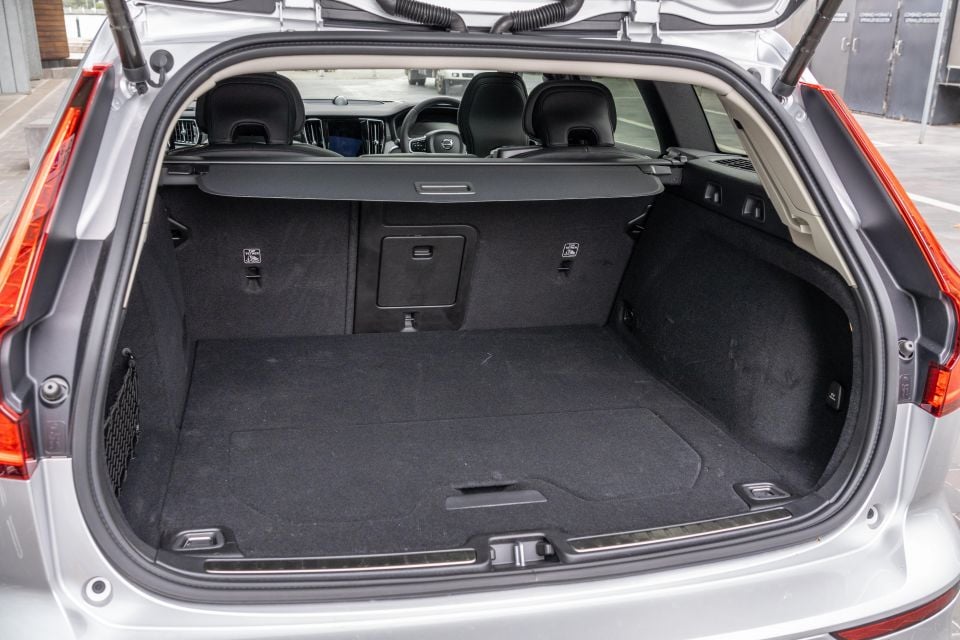
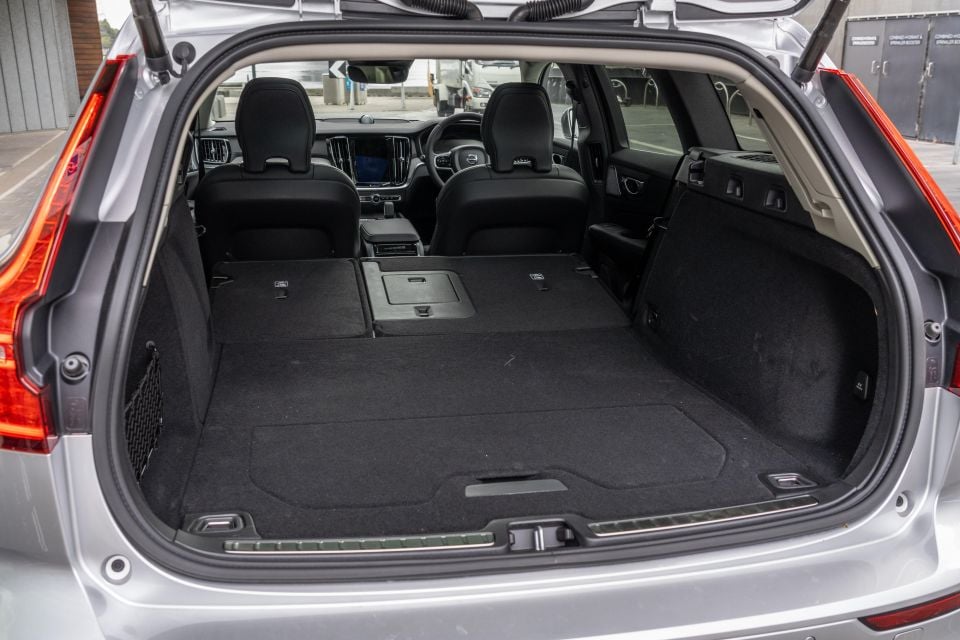
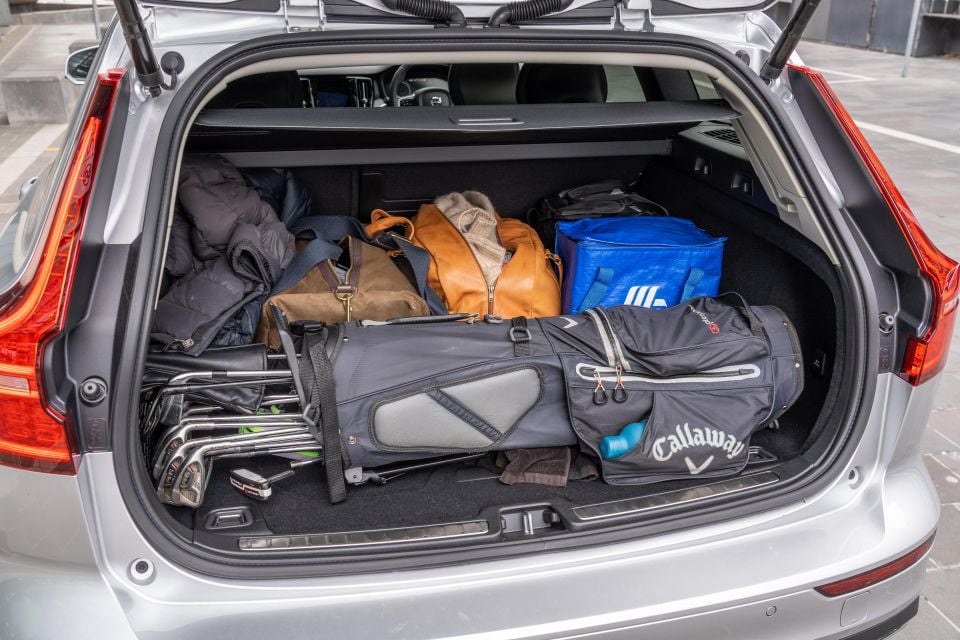
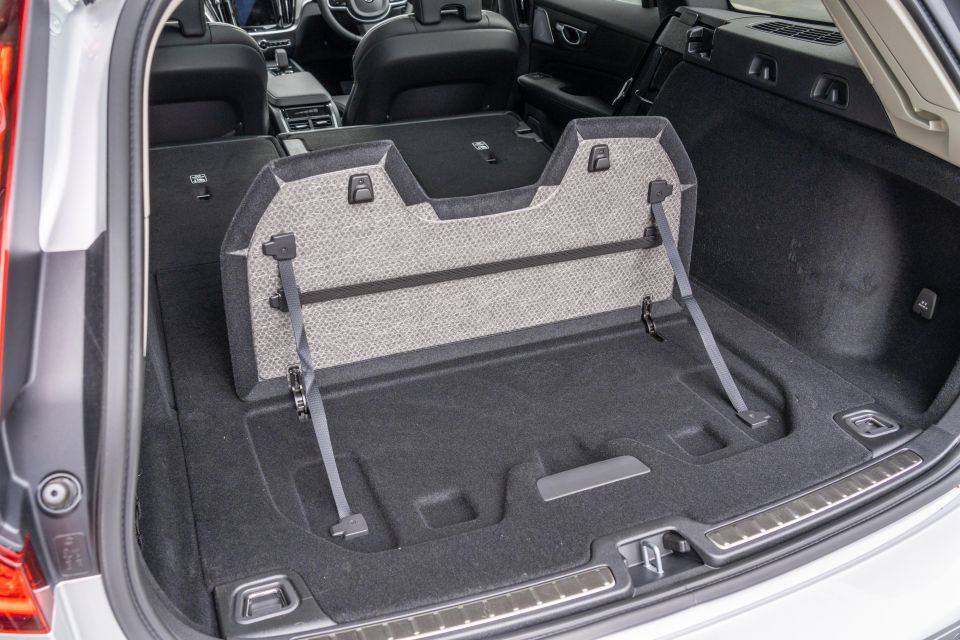
Boot space is a claimed 529 litres with the rear seats in place, expanding to 1449 litres with them folded flat. The boot itself is a broad, flat space with plenty of hooks and tie-down points, and the flip-up divider we’ve come to expect from Volvo.
Extra points go to Volvo for designing the powered tailgate in a way that allows you to load right up to the back edge of the boot without frying its electric brain, and for making the tailgate itself compact enough to open in a tight garage.
Beneath the boot floor is a space-saver spare wheel.
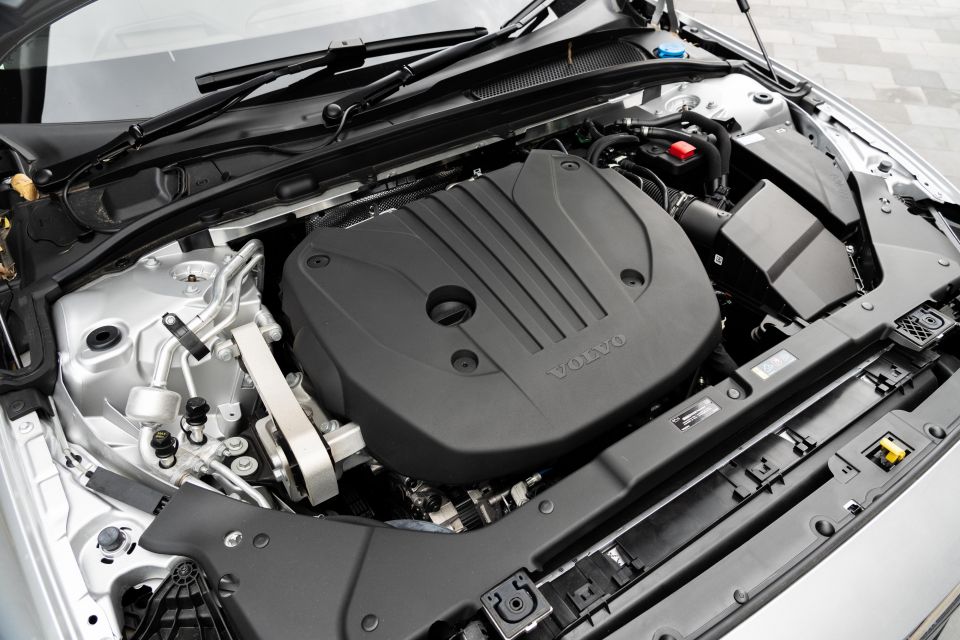
Power in the V60 comes from a 2.0-litre four-cylinder turbocharged petrol engine backed by a 48V mild-hybrid system.
It’s mated to an eight-speed torque converter automatic, and all-wheel drive as standard, and packs 183kW of power and 350Nm of torque – good for a 6.5-second sprint to 100km/h.
Claimed fuel economy on the combined cycle for the V60 Cross Country is 7.4 litres per 100km. The car has a 60L fuel tank, and demands 95 RON premium unleaded.
In the real world, even with a huge skew to highway driving, we saw 8.0 litres per 100km. Blame a few runs up Falls Creek, where the 2.0-litre engine has to be worked hard.
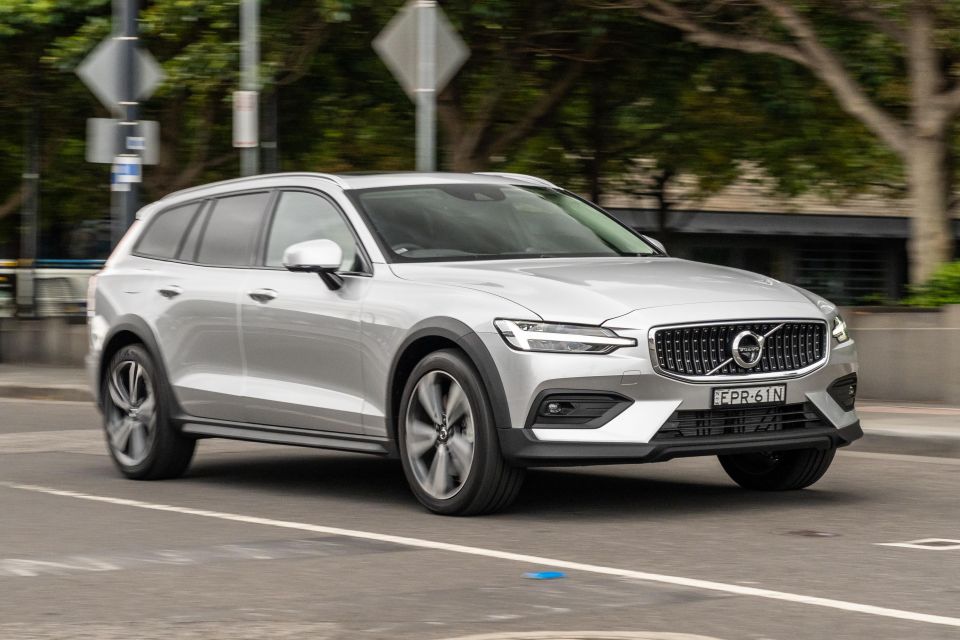
In a world dominated by cars trying to be sporty, the V60 Cross Country stands out by being comfortable and proud.
There are no paddles shifters on the wheel, nor any overt buttons to flick into a contrived Sport mode, and it’s (mostly) better for it.
The petrol engine fires smoothly, and settles immediately into a near-silent idle. It’s backed by a 48V mild-hybrid system designed to deliver smooth start/stop, and to provide a torque boost before the engine’s turbocharger is singing, and for the most part it delivers on that promise.
The engine might be little, but it packs hot hatch levels of punch. In the city it gets off the mark quickly and, with the 48V system providing a helping hand, pulls reasonably hard through the mid-range. The engine makes a raspy noise when you put your foot down, and the eight-speed automatic does a good job shuffling from gear-to-gear.
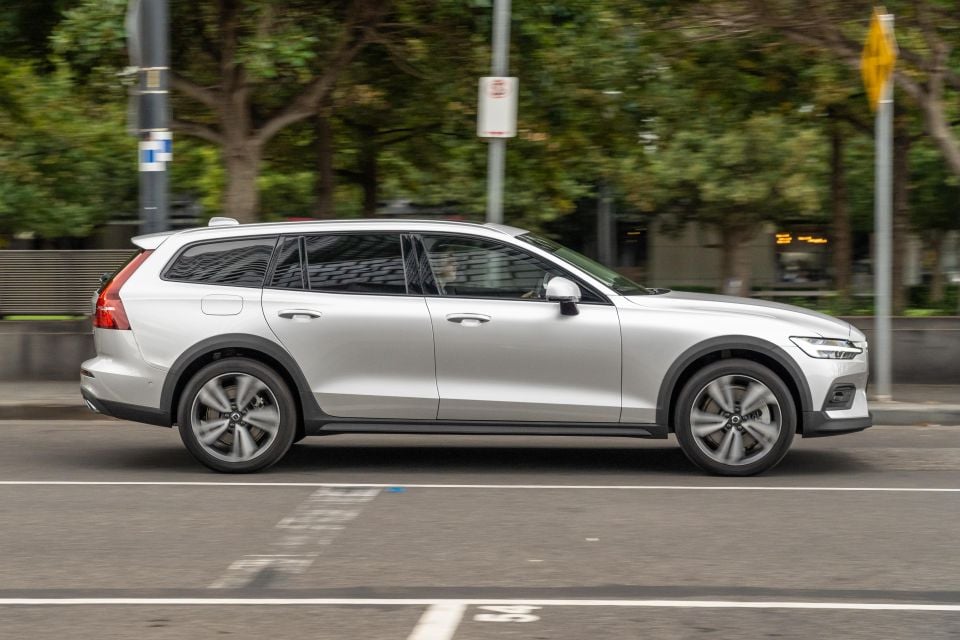
Find out more about the car
It’s generally unobtrusive, shifting quickly through to a tall ratio on light throttle inputs, and kicks down quickly enough when you bury the accelerator. The ZF eight-speed in a BMW 3 Series is snappier, but the Volvo gets the job done with a minimum of fuss.
In Europe, the V60 is available with a choice of two suspension tunes. In Australia, we get the more comfort-oriented Touring setup and smaller 19-inch alloy wheels as standard.
The V60 does a decent job keeping out the worst the city can throw at it. With 203mm of ground clearance it’s meaningfully taller than the regular S60 and V60, which plays out in the form of a cushy, long-ish travel feeling over speed bumps.
Even with its more comfortable tune, some smaller lumps and bumps filter through at low speeds though. Expansion joints in particular make their presence felt, and potholes can clatter into the cabin harder than they really should.
It’s a shame, because the car’s compact-ish exterior and decent cameras mean it’s otherwise right at home in the urban jungle.
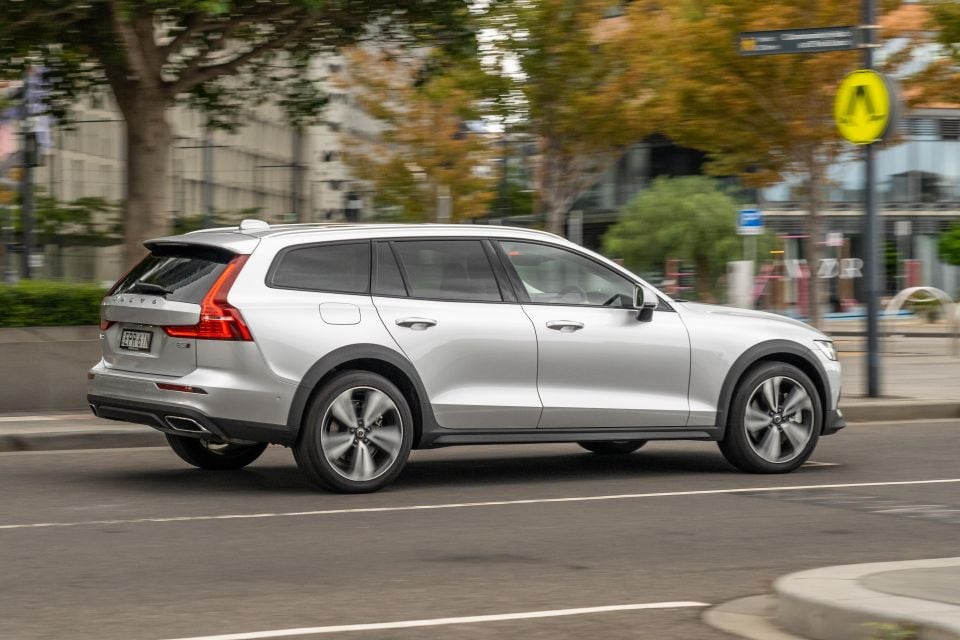
It settles nicely at highway speeds, though. Refinement is exceptional, with very little wind or tyre noise sneaking into the cabin even on average country roads, and the slightly brittle ride that blights the car at low speeds gives way to a rock solid feeling at speed.
Volvo’s driver assists are some of the smoothest in the business, too. On the five-hour schlep from Melbourne to Falls Creek it absolutely ate up the highway miles, adaptive cruise taking the edge off the Hume Freeway and excellent LED headlights piercing a hole in the Kiewa Valley darkness.
There’s even some fun to be had when the road gets twisty. The slow-ish steering doesn’t scream sports car but it’s linear and fluid off centre, and the all-wheel drive system makes light work of slick tarmac.
You need to work the engine hard to really get a move on though, and flicking the transmission into manual mode means you need to flick the stubby little shifter in a slightly awkward left/right pattern.
A big diesel isn’t really in tune with the times, but it’s hard not to wish for a slightly torquier engine in the V60. Surfing a wave of torque from an under-stressed inline-six would be more in keeping with the car’s vibe than the 2.0, which just needs to be worked that bit harder.
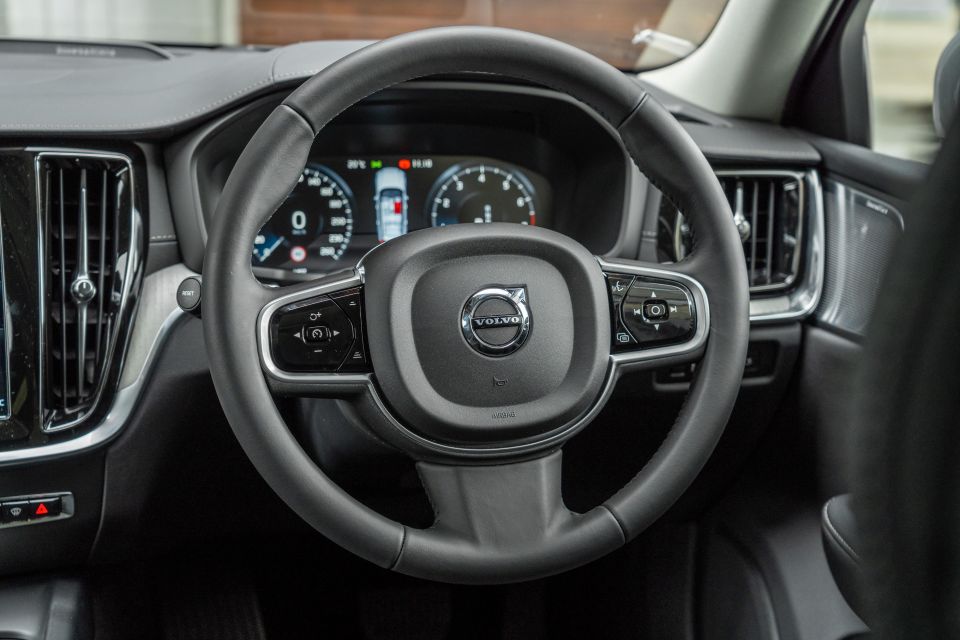
The V60 Cross Country is backed by a five-year, unlimited-kilometre warranty.
Maintenance is required every 12 months or 15,000km. A three-year service plan costs $1500, while a five-year plan will set you back $2500.

The Volvo V60 Cross Country isn’t perfect, but it’s not all that far from it.
It’s one of those cars that just works. It’s the perfect size on the outside, and features just as much boot space as you’d get in the equivalent SUV… but with a kind of if you know, you know cool factor you just don’t get with an XC60.
It’s right at home on the highway, and handles better than you’d expect of a raised wagon with no real sporting pretence. It’s a shame Volvo doesn’t offer a more relaxed diesel engine option, because it’d be perfectly in keeping with the car’s relaxed, luxurious character.
Even with the petrol engine, however, the V60 Cross Country should be high on your shopping list. We love a wagon here at CarExpert, and the V60 CC is a very appealing take on the mid-sized luxury wagon formula.

Click the images for the full gallery
MORE: Everything Volvo V60
Take advantage of Australia's BIGGEST new car website to find a great deal on a Volvo V60.
Scott Collie is an automotive journalist based in Melbourne, Australia. Scott studied journalism at RMIT University and, after a lifelong obsession with everything automotive, started covering the car industry shortly afterwards. He has a passion for travel, and is an avid Melbourne Demons supporter.


James Wong
1 Year Ago
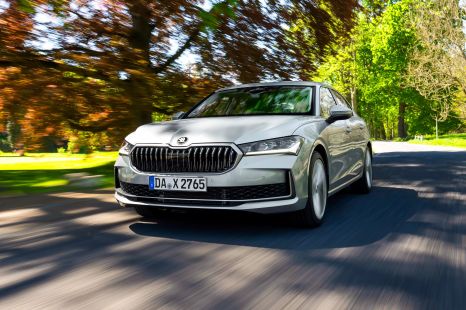

Matt Campbell
11 Months Ago
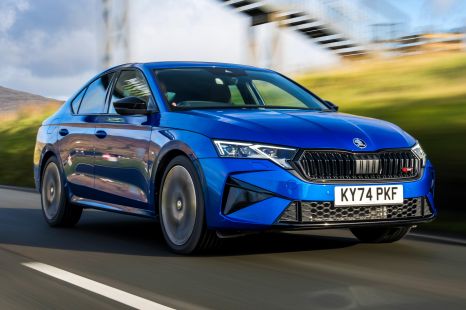

Matt Robinson
8 Months Ago


Matt Campbell
7 Months Ago
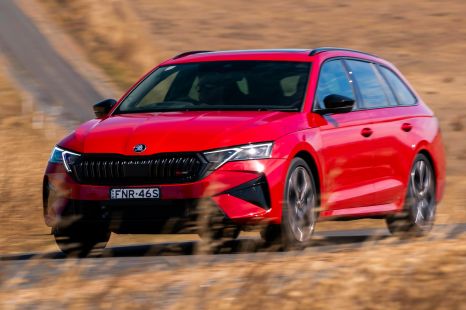

Josh Nevett
4 Months Ago
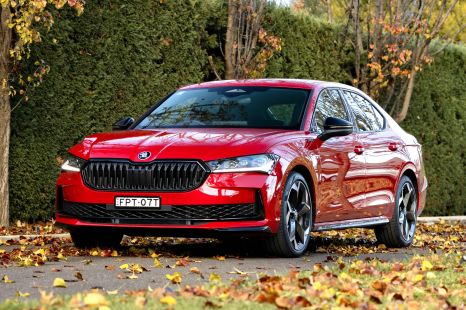

Max Davies
1 Month Ago